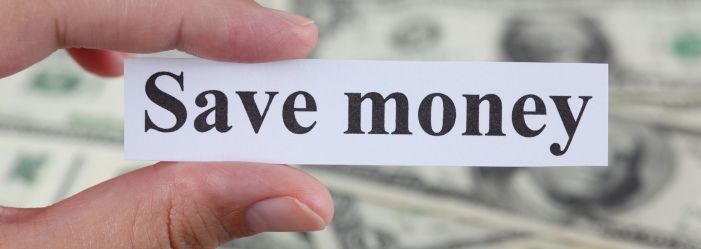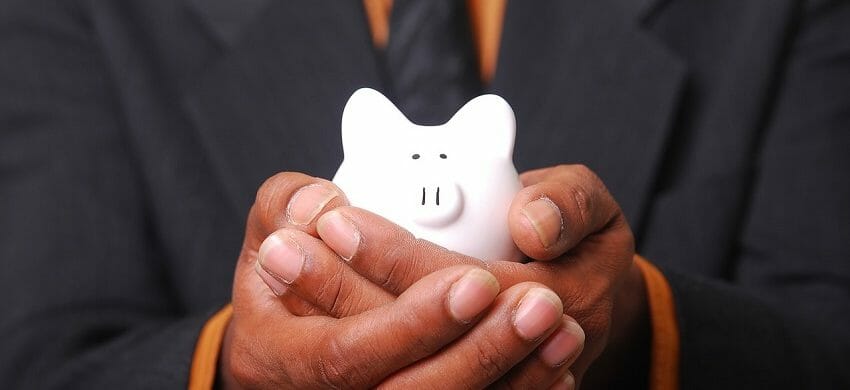Last updated: March 22, 2024
Save more for a Better Future

Disclaimer: We are not qualified legal or tax professionals and are not giving advice. Always speak with a qualified professional before making any legal or financial decisions.
Understanding how much to save for the future is crucial for achieving financial stability and peace of mind. While there's no one-size-fits-all answer, financial experts often recommend setting aside three to six months' worth of basic living expenses.
This guideline serves as a foundation for building a robust financial safety net, ensuring you're prepared for unexpected challenges life may throw your way.
In this article, we'll explore practical steps to determine your ideal savings target, strategies to reach your goals more efficiently, and how to make the most of your savings with the right financial tools. Let's embark on a journey to secure your financial future by establishing and growing your savings.
Skip the article, dive into a free consultation with our debt specialist.
Is It Better to Pay Off Debt or Save Money?
Paying off debt versus saving money is a million-dollar question. We address different strategies for saving or becoming debt-free in greater detail in Is It Better to Pay Off Debt or Save Money. Everyone’s finances are different and we lay out the pros and cons so that you can best address your unique situation.
But simply paying off debt or saving money does not address the question of how much you need to save each month or in total. Let’s take a look at different options for saving money.
Types of Savings Accounts
At a bare minimum, everyone should have two savings accounts: one for emergencies and one for retirement. Beyond that, you can have as many savings accounts as you have money to put in them! Your best plan is to keep your accounts separate and clearly labeled so you know exactly what you have.
Ideally, your emergency savings account should have three to six months of living expenses. Since most of us cannot put aside that much money at once, start with a small goal of $1,000 and build up. ONLY use this money for true emergencies like car breakdowns, unexpected medical bills, and the like.
Then rebuild the balance as you use it. As you accrue money in this account, you can move some of it into higher-interest money market accounts or CDs. Online savings accounts often offer far higher interest rates than conventional brick-and-mortar banks or credit unions. They are fairly easy to get the money from, usually transferring the money within a day or two
Your retirement account should be a 401K, an IRA, or a similar plan. Since we are not accountants, we are not advising you on which one to choose. You will want to make your choice by speaking to a financial advisor. The exact amount you need to work toward each year will depend on your age and what you want to do after you retire.
If you’ve come into some extra money and would like some suggestions on what to do with it, check out our article Is it better to pay off debt or save money? If extra money isn’t coming your way, don’t worry. You may be able to squeeze out some savings by following the tips in What’s the Fastest Way to Save Money?
How Much Should I Have in Savings?
The trusted financial website Bankrate offers a breakdown of how much the average American needs to have in a retirement and an emergency savings account by age. Don’t be discouraged if you have not got the amount that corresponds to your age. Most Americans don’t. The key is to start saving your money today.
| Age | Retirement saving goal | Emergency saving goal |
|---|---|---|
| 30 | $66,470 | $10,368 to $20,736 |
| 40 | $277,728 | $12,900 to $25,800 |
| 50 | $596,538 | $13,158 to $26,316 |
| 60 | $643,792 | $11,598 to $23,196 |
**Source: Bankrate
If you are good at math, you can fine-tune these numbers above based on your real monthly expenditures and then multiply the total by 3 for a two income household or by 6 for a one-income household.
How Much Should I Save Each Month?
Generally speaking, financial experts say that you should put 20% of your monthly income into savings. The 50/30/20 budget rule is a popular way to prepare a fast and simple budget. You spend 50% on necessities, 30% on wants, and 20% goes into savings. (Hint: deposit the savings first before you pay bills or buy that new jacket you’ve been wanting!) Once you have your emergency savings started and a retirement account funded, you can save up toward a vacation or special purchase.
Just always make your emergency fund and retirement account your priorities. In fact, you can use the 50/30/20 rule for any free money or bonuses. Put the majority into your retirement and emergency accounts and either spend some of the remainder on bills or you can put it into a special vacation/big purchase or savings account. Whatever you do, try not to fall into the credit card trap. It can be really hard to break free from credit card debt.
Don’t Make Enough Money to Save
If saving even a dollar is beyond your financial means and you cannot make even your monthly minimum payments, there is help available. Credit counseling, debt settlement, and debt consolidation are all options to consider before you declare bankruptcy. If you aren’t certain which one is best for you, Pacific Debt, Inc can help. We are a debt settlement company with an excellent track record and success rating. However, since everyone’s financial situation is unique, debt settlement may not be the best option for you. Pacific Debt, Inc’s award-winning Account Managers will help you understand your options and choose the best course for you. You can become debt-free and start saving money for your retirement and emergencies.
Budgeting Tips
Getting a solid budget in place is key to saving money and paying off debt. Consider following the 50/30/20 budget rule:
- 50% of your income covers needs like housing, utilities, transportation
- 30% goes toward wants like dining out, entertainment, vacations
- 20% should be put into savings and debt payments
Reducing discretionary spending where possible and automating transfers from your checking account to various savings accounts will also help you save consistently each month. Utilize free expense-tracking apps or spreadsheets to get better visibility on where your money is going. Identifying spending leaks is an important first step.
Building an Emergency Fund
Financial experts typically recommend saving 3-6 months' worth of living expenses for an emergency fund, to cover unexpected expenses without needing to take on additional debt. This money should be kept somewhere safe, liquid, and easily accessible, like an FDIC-insured high-yield savings account at an online bank. Online banks tend to offer the best interest rates.
Aim to initially save $1,000 - $2,000 in your emergency fund savings account, if saving the full 3-6 month target seems unrealistic based on your current finances. Then continue adding to it consistently each month or whenever you have some extra funds. Consistent contributions, no matter how small, will grow your emergency savings fund over time.
Investing Your Money
Once you have paid off any high-interest debt and built up sufficient emergency savings, investing is the next step to put your money to work for you. Some investment options to consider:
- Stocks - investing in individual company stocks or diversified mutual funds if going with individual stocks seems too risky.
- Bonds - corporate and government bonds generally pay interest and provide steady returns with lower risk.
- Real estate - can be invested through REITs without needing to own physical property.
Retirement accounts like 401Ks and IRAs invest your money tax-advantaged way.
Ensure you do sufficient research before investing to determine your risk appetite and timeline. Investing for the long term provides the best opportunity for solid returns.
Saving for Retirement
Saving and investing specifically for retirement should be an urgent priority. Here are some tips:
- Take full advantage of employer-sponsored plans like 401Ks, especially if they offer matching contributions. That's free money!
- Open your own Individual Retirement Account (IRA) to supplement employer accounts. Roth IRAs in particular can be excellent retirement savings vehicles.
- If you've maxed out all available tax-advantaged retirement savings accounts, consider investing additional funds in a regular, taxable brokerage account.
- Use retirement calculators to determine your overall target numbers by expected retirement age and lifestyle desires.
FAQs
Conclusion
Creating a budget, building emergency savings, paying off debt, and contributing to retirement accounts should be top priorities on the road to financial security. Automate what you can - like bill payments and transfers to savings accounts - so consistent passive saving becomes effortless.
Start small if needed, the key is to start. Compound interest and consistent contributions work investment magic over decades. There are many free tools and community resources available if you need guidance or support.
Investing in your financial literacy will pay invaluable dividends. Educate yourself on money management basics, understand the power of budgeting, make a debt repayment and saving plan, and stick to it. You've got this!
Pacific Debt, Inc.
Pacific Debt Inc. is one of the leading debt settlement companies in the US and we have consistently been named one of the best for years. This year, we earned two #1 rankings for our customer service. We help you understand your options and whether or not debt settlement is your best option. If it is not, we can refer you to a trusted partner who may be more appropriate for your situation.
If you’d like more information on debt settlement or have more than $10,000 in credit card debt that you can’t repay, contact Pacific Debt, Inc. We may be able to help you become debt-free in 2 to 4 years and we’ve settled over $300 million in debt for our customers since 2002.
Once you’ve completed our debt settlement program, your financial situation should start to improve. You’ll then be able to take the money you once had to pay towards your debt and be able to use it for other purposes like saving, investing, retirement, etc.
Pacific Debt, Inc is accredited with the Consumer Debt Relief Initiative (CDRI) and is an A+ member of the Better Business Bureau. We rate very highly in Top Consumer Reviews, Top Ten Reviews, Consumers Advocate, Consumer Affairs, Trust Pilot, and US News and World Report.
Pacific Debt is currently providing debt relief coverage in the following states:
Alabama, Alaska, Arizona, Arkansas, California, Colorado, District of Columbia, Florida, Idaho, Indiana, Kentucky, Louisiana, Massachusetts, Maryland, Michigan, Minnesota, Missouri, Mississippi, Montana, North Carolina, Nebraska, New Mexico, New York, Oklahoma, Pennsylvania, South Dakota, Texas, Utah, Virginia, Wisconsin
* Other states can be connected to one of our trusted partners
For more information, contact one of our debt specialists today. The initial consultation is free, and our debt experts will explain to you all your options.
*Disclaimer: Pacific Debt Relief explicitly states that it is not a credit repair organization, and its program does not aim to improve individuals' credit scores. The information provided here is intended solely for educational purposes, aiding consumers in making informed decisions regarding credit and debt matters. The content does not constitute legal or financial advice. Pacific Debt Relief strongly advises individuals to seek the counsel of qualified professionals before undertaking any legal or financial actions.
✔ Accredited by Better Business Bureau with BBB A+ rating (4.93 rating and 1678 reviews)
✔ US News and World Reports and Bankrate ranked Pacific Debt Relief as one of “The Best Debt Relief Companies of 2024”
✔ 6.9 star rating by BestCompany.com (over 2379 client reviews)
✔ 4.8 star rating by TrustPilot based (over 1613 verified consumer reviews)
✔ ConsumerAffairs.com Accredited (over 544 verified reviews with an average rating of 5 stars)
✔ A Top 10 Rated Compan by TopTenReviews.com , ConsumersAdvocate.com and Top10debtconsolidation.com
✔ 4.6 star rating by Google (229 client reviews)
✔ 100% rating by SuperMoney (9 client reviews)
Reduce Your Credit Card Debt By Up to Half

BBB Reviews | 4.9/5.0 Rating









 Do Not Sell My Personal Information
Do Not Sell My Personal Information